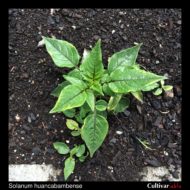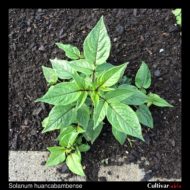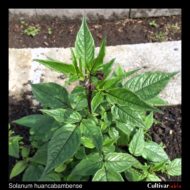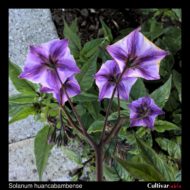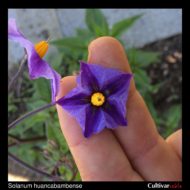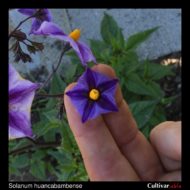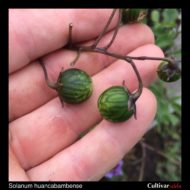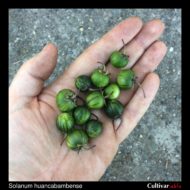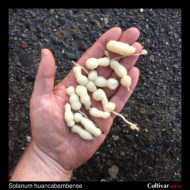Solanum huancabambense
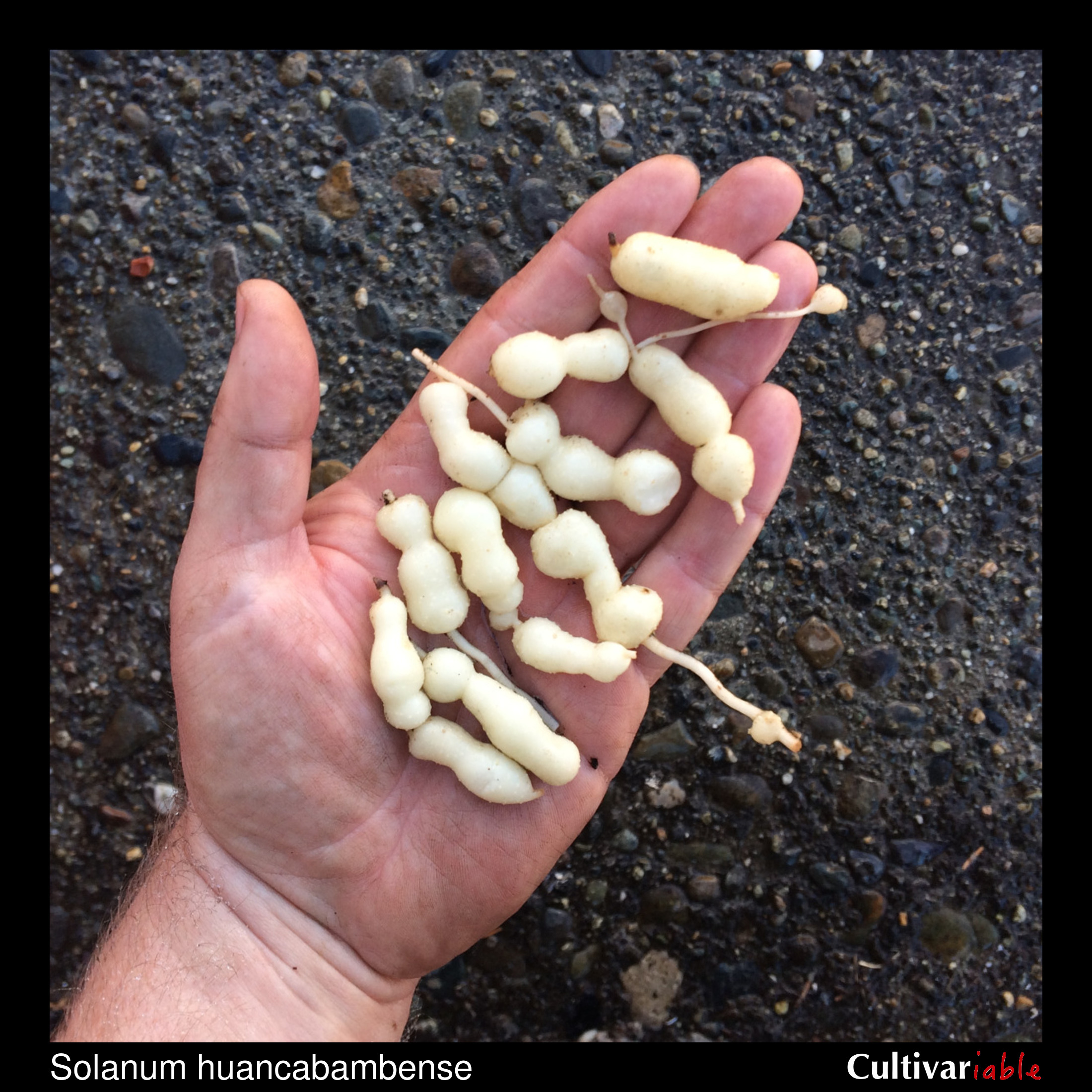
| Common Names | Huancabamba nightshade |
| Code | hcb |
| Synonyms | |
| Clade | 3 |
| Series | Yungasense |
| Ploidy | Diploid (2x) |
| EBN | 2 |
| Tuberization Photoperiod | Short Day |
| Self-compatibility | No |
| Nuclear Genome | P |
| Cytoplasmic Genome | Unknown |
| Citation | Ochoa: Agronomía (Lima) 26(2): 109. 1959. |
Description
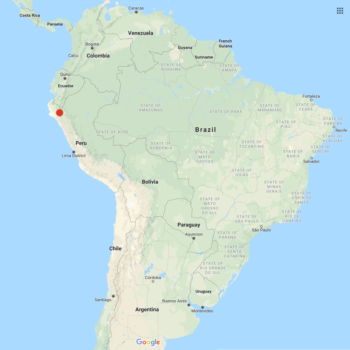
Based on the published descriptions of this species, it seems that I might have a mismatch here. I have gone back to the original genebank accession and confirmed that I get seedlings of the same type, so I’m not sure if this is an unusual accession of the species or a mistake by the genebank. As soon as I figure it out, I will make corrections.
Solanum huancabambense is a species of small distribution in northern Peru. Plants reach a little more than a foot tall. Leaves are shiny and hairless (glabrous). White flowers. Overall this is a very attractive plant and it seems like it might have some ornamental potential.
The specific epithet, huancabambense, refers to Huancabamba, Peru. While there is no completely standardized pronunciation for scientific names, the most common way to pronounce this species is probably so-LAY-num wahn-kah-bam-BEN-see.
Resistances
This species can survive frosts down to 26 degrees F (-3.5 C) (Li 1977). Vega (1995) found that this species is more frost tolerant than domesticated potato.
This species resists the AVR2 effector of the late blight organism, one method of resistance to late blight (Aguilera-Galvez 2018). It most likely evolved this trait separately from North American species that have been more commonly used in late blight breeding, so it may be useful for broadening the genetic basis of that resistance. On the other hand, Garry (2001) found that late blight lesions were larger on S. huancabambense than on domesticated potato (possibly an indication of protective sensitivity to infection).
| Condition | Type | Level of Resistance | Source |
|---|---|---|---|
| Phytophthora infestans (Late Blight) | Fungus | Somewhat resistant | Aguilera-Galvez 2018 |
| Phytophthora infestans (Late Blight) | Fungus | Not resistant | Gonzales 2002 |
Glykoalkaloid content
No information.
Images
Cultivation
I have found this species difficult to germinate. It might require different conditions than the standard for S. tuberosum.
Breeding
Crosses with S. tuberosum
| Female | Male | Berry Set |
Seed Set | Germ | Ploidy | Source |
|---|---|---|---|---|---|---|
| S. huancabambense | S. tuberosum | None | None | Jackson (1999) | ||
| S. tuberosum | S. huancabambense | None | None | Jackson (1999) |
Crosses with other species
Jackson (1999) found 4-12% 2n pollen for varieties of this species.
| Female | Male | Berry Set |
Seed Set | Germ | Ploidy | Source |
|---|---|---|---|---|---|---|
References
Solanum huancabambense at Solanaceae Source

